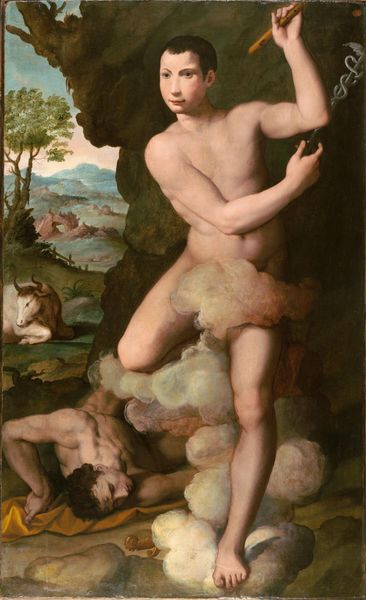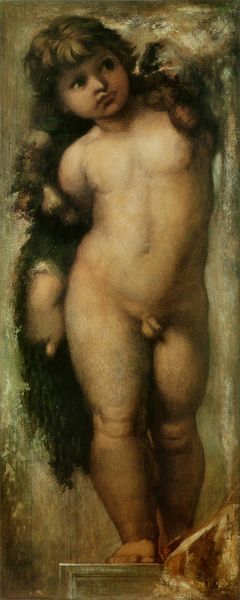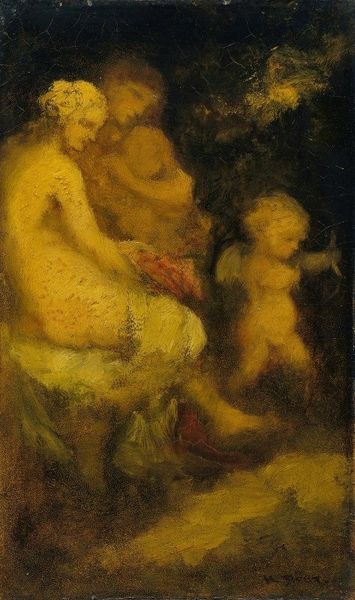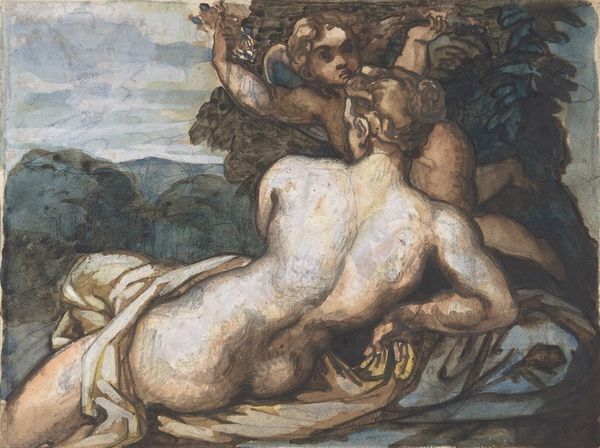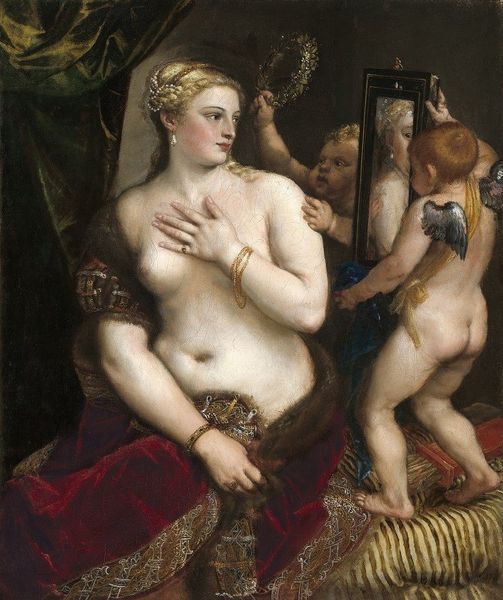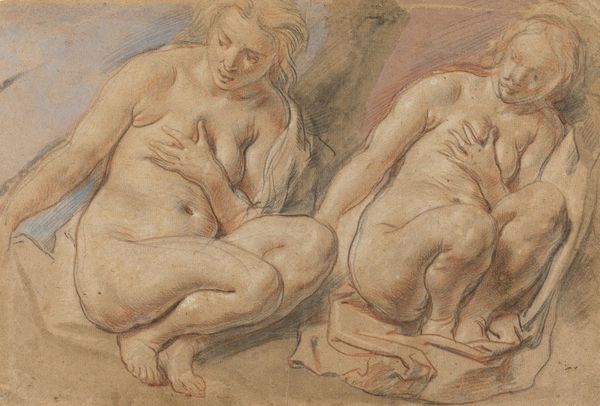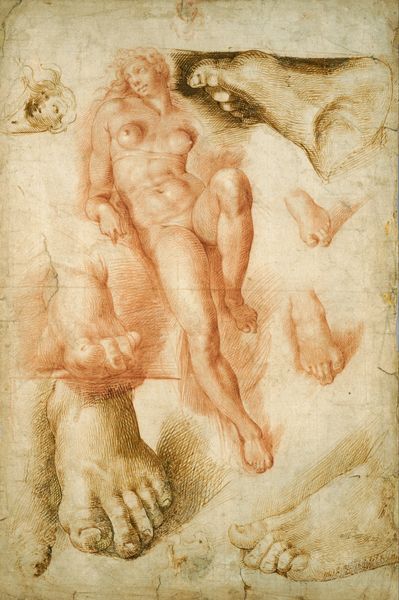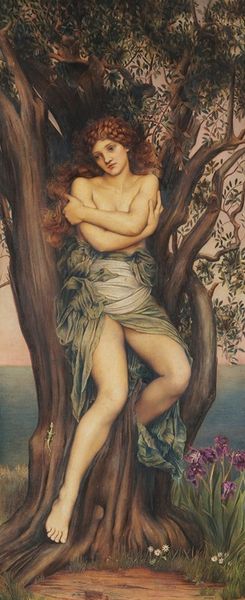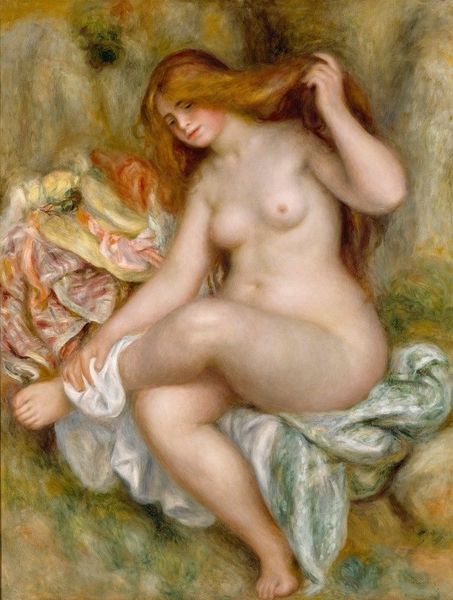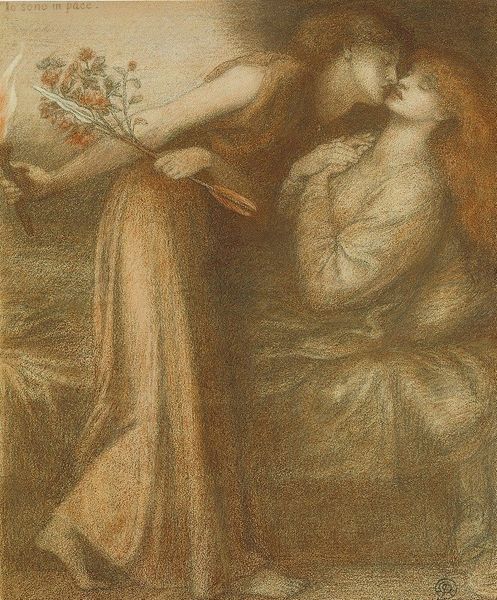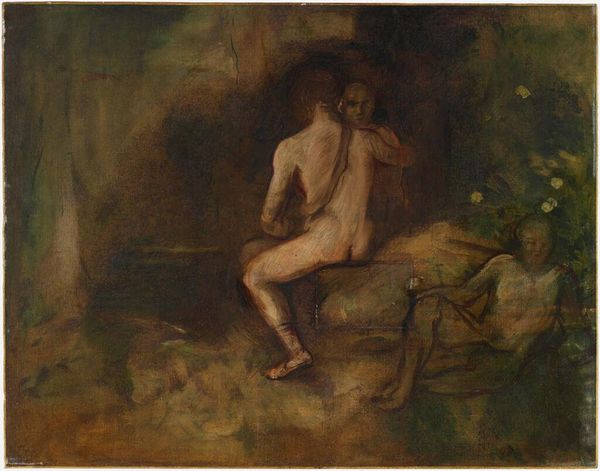
oil-paint
#
venetian-painting
#
allegory
#
oil-paint
#
mannerism
#
figuration
#
oil painting
#
mythology
#
line
#
history-painting
#
nude
Copyright: Public Domain: Artvee
Curator: The painting we're looking at is titled "Muse with Lute," attributed to Jacopo Tintoretto and created sometime between 1528 and 1594. Editor: The color palette is intriguing! Subdued tones—greens, browns, some soft reds—give it an ethereal, almost dreamlike quality. It feels less like a celebration and more like a contemplation. Curator: Exactly. Consider how Venetian painting of the period, deeply influenced by the Republic's political climate and wealth, favored mythological and allegorical themes. This nude figure embodies the muse, an inspiration to artists and thinkers. The lute adds another layer, representing harmony and intellect. Editor: And how the pigment is layered… I'm struck by the almost sculptural quality of the rendering, especially on her face. You can see how Tintoretto worked the oil paint to capture the light and create volume, almost as if he was working with clay. Curator: And those visible brushstrokes indicate Tintoretto's departure from the classical idealism toward a more personal, expressive style, coinciding with Mannerism. This piece hints at an academy-driven interest in the idealized human form. How do you interpret her downward gaze? Editor: Perhaps an introspection? Or, maybe a physical necessity to watch the fingers pluck strings on that lute! We also shouldn't dismiss how Tintoretto may have had to be resourceful given his workshop context, juggling between various commissions and maybe experimenting more in private works such as this. Curator: That is astute, given Tintoretto’s well-documented work practices and the competitive Venetian art market at the time, influencing his focus on quantity of output. The distribution of this type of imagery undoubtedly contributed to notions of femininity at that period, too. Editor: It definitely shows how much value the workshop and artistic practice had! Curator: This piece encapsulates how a work can participate both in social commentary and formal aesthetic investigations. Editor: I find this work beautifully highlights the tension between physical making, artistic representation and broader cultural symbolism of muse figures.
Comments
No comments
Be the first to comment and join the conversation on the ultimate creative platform.
